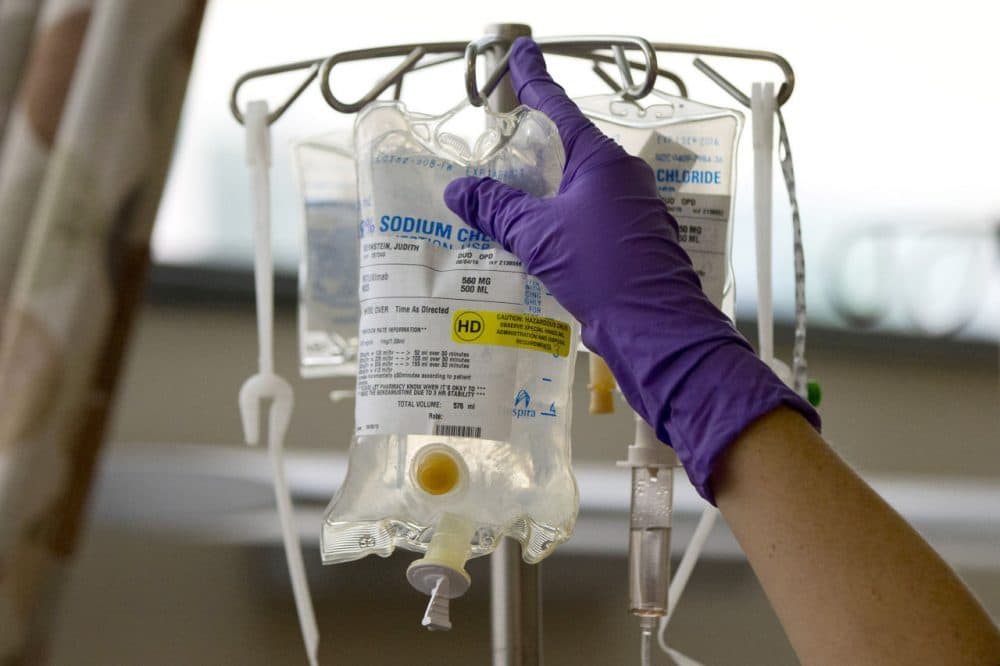Advertisement
Commentary
9 Savvy Points About The Nurses Ballot Measure From An Expert Dismayed By Both Sides

Editor's note: I've never had as many people ask me how to vote as I have in the recent run-up to Question 1, the state ballot measure on nursing ratios. That surely goes at least tenfold for nursing workforce researcher Karen Donelan. She wrote this post for family members and friends on Facebook to answer their queries, but agreed when CommonHealth asked her permission to re-post it here, lightly edited. — Carey G.
I have two daughters: One is a nurse practitioner, the other a nursing student. I work at a large Massachusetts hospital and have a doctoral degree in health policy and management with a focus on institutional and political analysis.
I've been doing nursing workforce research since 1995 with some of the leading nurse researchers, labor economists and quality researchers in the country — many of whom have been involved in analyses of Question 1 on both sides. I work with, and am friends with, nurses who support and who oppose this initiative.
So I have personal and academic interest, some conflicts of interest and one kind of expertise to lend on this question.
Here are some things I think and believe about Question 1:
1. Staffing levels at some hospitals and other facilities in our state are almost certainly unsafe at some times. This is especially true at many hospitals that care for the most vulnerable populations in our state, including adults and children with physical and mental health disability, and people who are poor. I worry the most about these hospitals and facilities, some of which are very small or in remote places.
2. As a state, we are very lucky. Our hospitals generally have nurse salaries and quality measures that exceed those in most other states. We have a very low rate of uninsured people. We have outstanding clinicians, scientists, social services and more.
3. Comparing Massachusetts and California on these issues is not helpful. Yes, they have a law, passed in 1999 — a time when a quarter of their population lacked health insurance. California's population is hugely diverse — racially, ethnically and geographically — compared to ours. The data on changes in the quality of care in California since their law came into effect are inconclusive, but our state exceeds them in many ways, then and now. Health care is so different now from when California passed their law. Most importantly, their law allowed time — five years! — for implementation, was developed in the legislature, and was written more carefully. This is not California.
Advertisement
4. The advertising on both sides of these issues has been terrible. In my opinion, both sides have stretched the truth and even flat-out lied about some of the research underlying their claims. Both have resorted to ugly scare tactics. Both sides should be ashamed.
5. There is absolutely no doubt that this law would raise costs in our health system. Estimates vary, but you cannot add staffing and not raise costs. That may be OK with everyone, but should we spend our estimated new $500 million to $1 billion on RNs?
I believe our system needs more staffing, especially for the more vulnerable patients, but I would prefer to see that staffing include community-based nursing, social services, community health workers, physician assistants and nurse practitioners, home services for frail elders, and recovery and treatment support for people with addiction. The future of care for those populations is in the community, not the hospital. If we shift these personnel to the hospital, which will certainly happen, we will not have them in the community.
We will hurt the places that need the most help.
6. If Question 1 passes, the big hospitals will win. They can pay more and provide better benefits. All analyses point to a disproportionate financial strain on already-strained hospitals. We will hurt the places that need the most help. The negative impacts on hospitals that serve more of the poor and vulnerable are my biggest concern. We can help them better by directing more public funds to Medicaid, investigating quality and safety concerns, and targeting our resources at the places that need more support.
7. Question 1 is poorly written. The short-sighted inclusion of the phrase “at all times” rather than “on average” in the bill (referring to mandated staffing ratios) underlies most of the estimated added cost to the system. For that matter, setting specific ratios was also a mistake. In my assessment, the ratios written in the initiative are likely wrong, and hospitals will have to staff in excess of them at all times — so you are effectively asking for even higher ratios than are written in the bill. Details matter.
8. Policy this important to health care quality and cost deserves careful and thoughtful debate, writing and implementation. This ballot initiative is neither careful nor thoughtful enough.
9. Finally, we likely need more nurse and other health care staffing in some parts of our state. I support nurses — nursing is one of the most highly trusted professions — but nursing is only one of many professions. But the best way to support them is to measure and fix safety issues, and to think more deliberately about who needs what and where. Where conditions are unsafe, let’s report those to the Department of Public Health and the Health Policy Commission and ask for investigation. Let’s get staffing — nurse and all other staffing — right. It does matter to access, quality and cost of care, and to the quality of nurses' work environment.
I do not support Question 1 as the appropriate means to achieve these ends. People I admire disagree. Whatever you believe, please vote!!
Karen Donelan is a senior scientist at the Mongan Institute Health Policy Center and associate professor of medicine at Harvard Medical School.
(Hat-tip to Richard Knox)